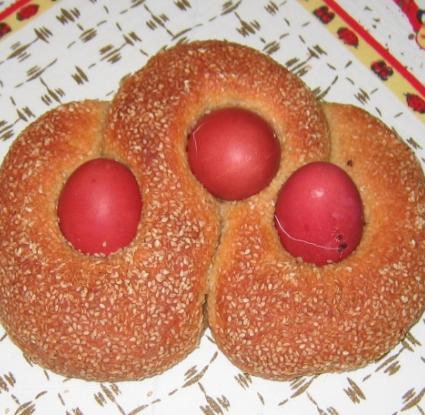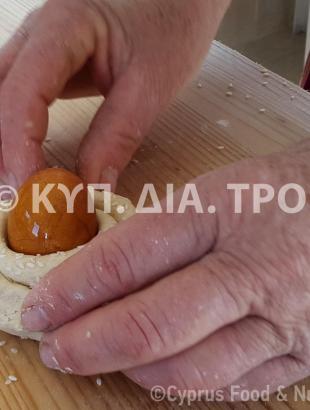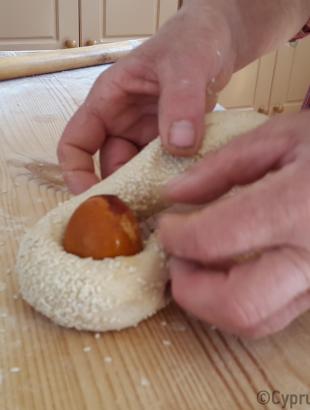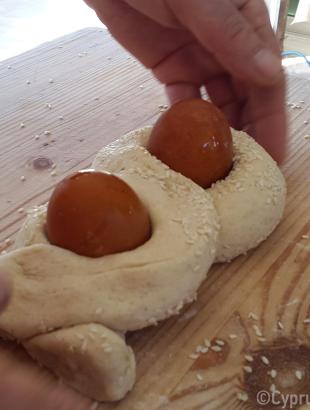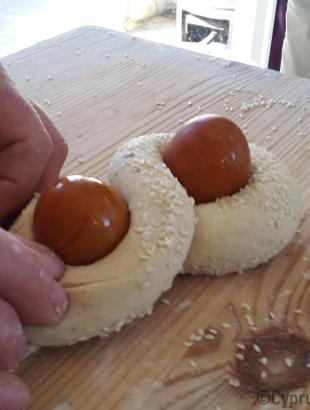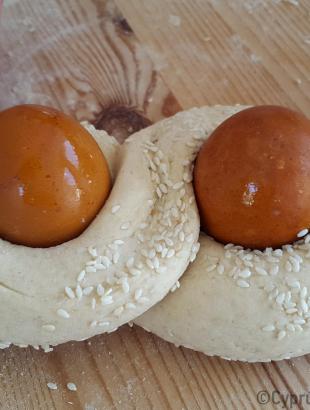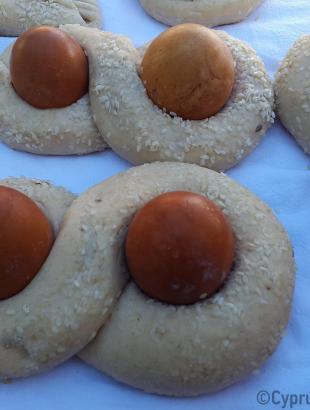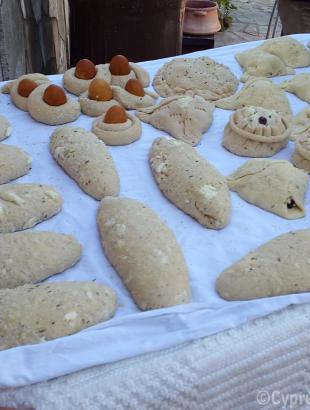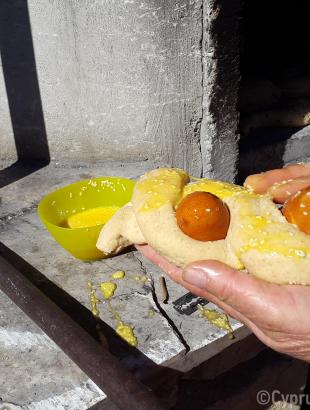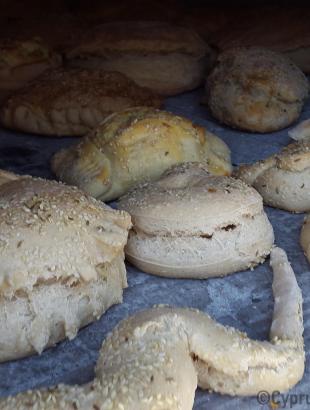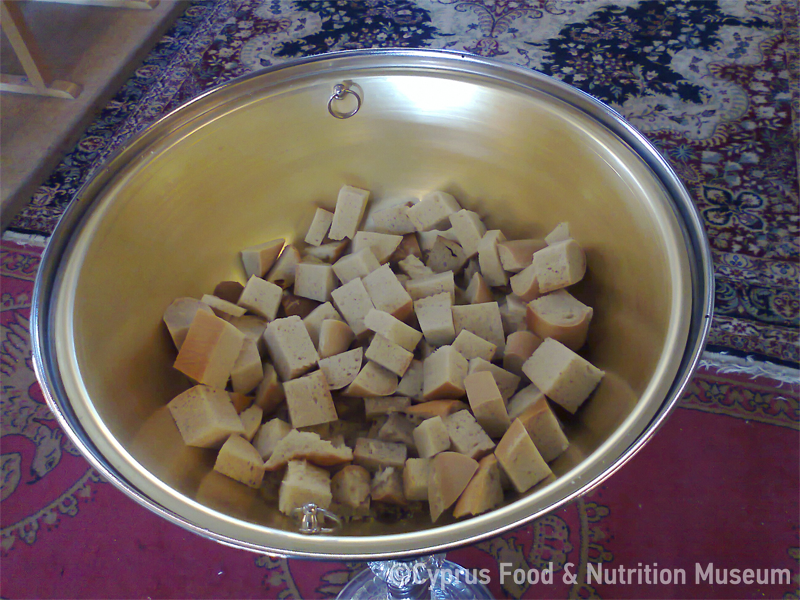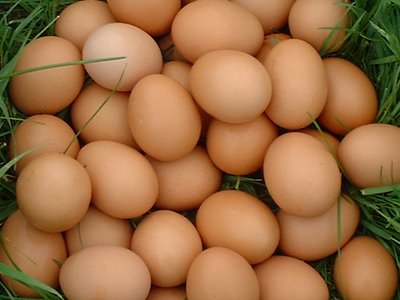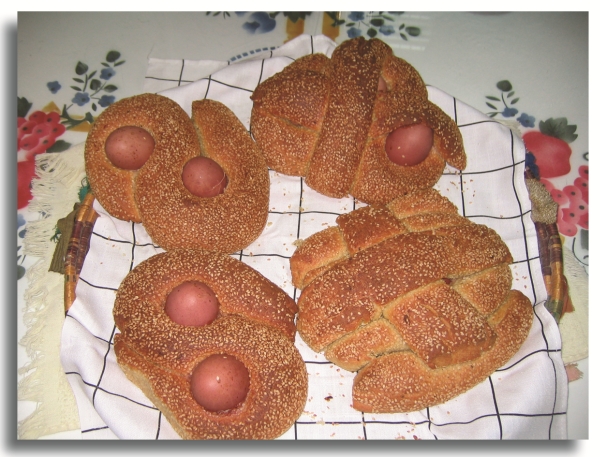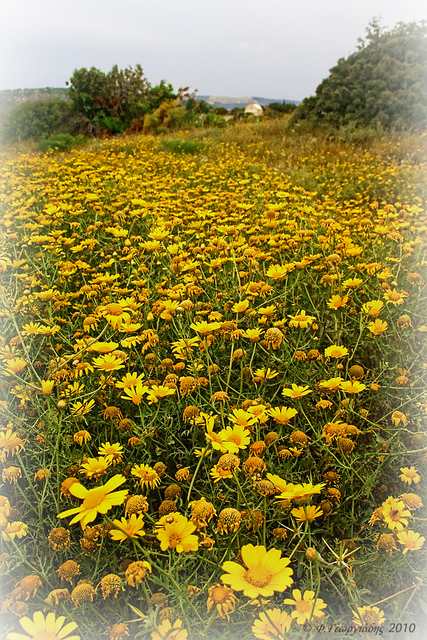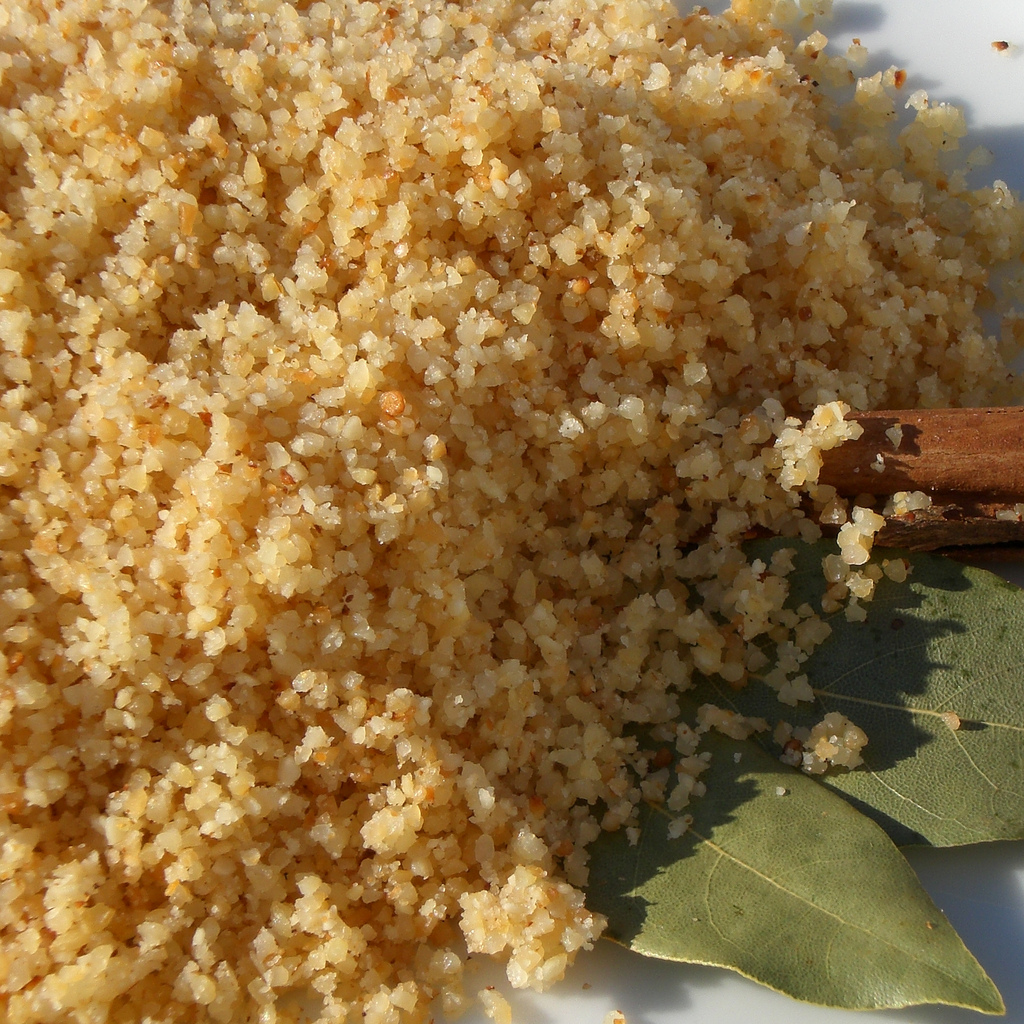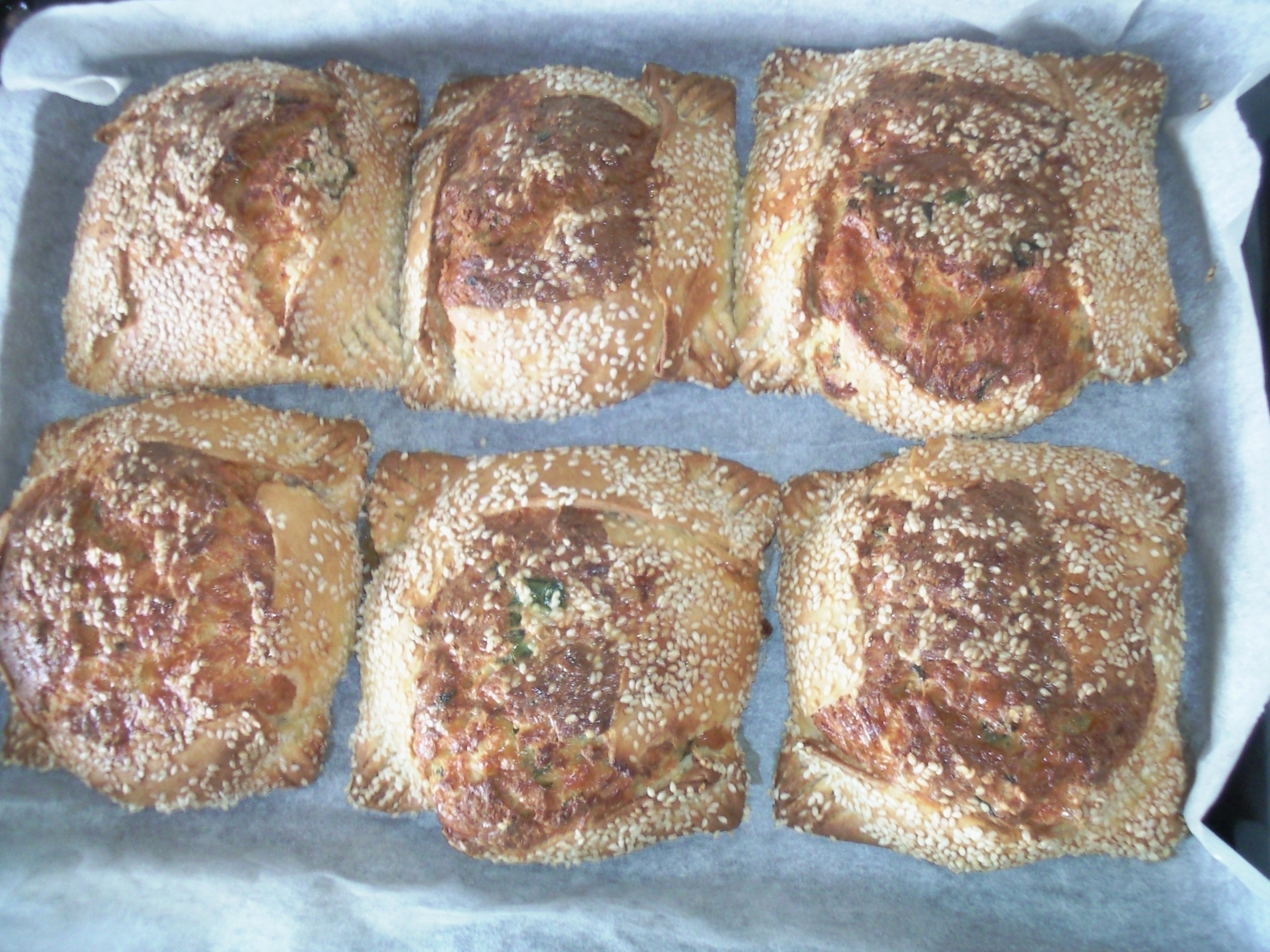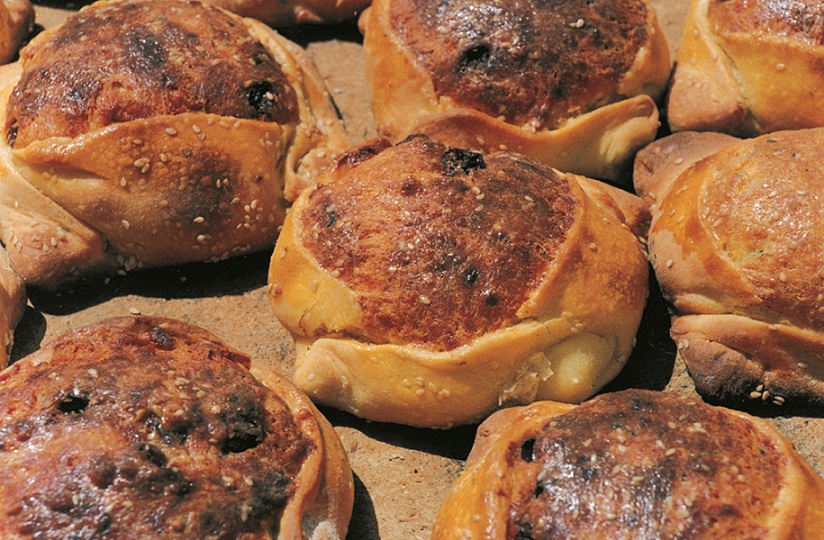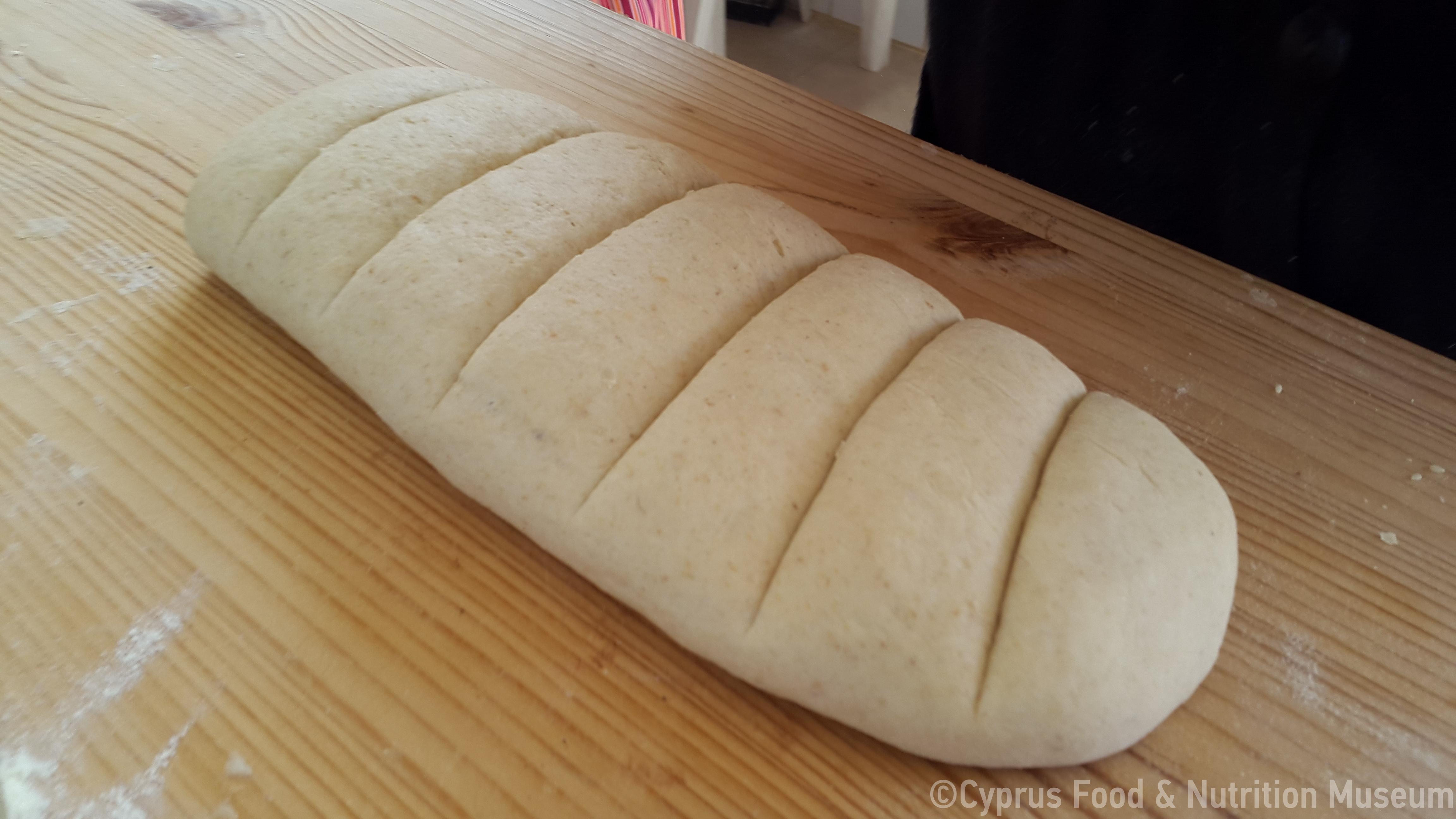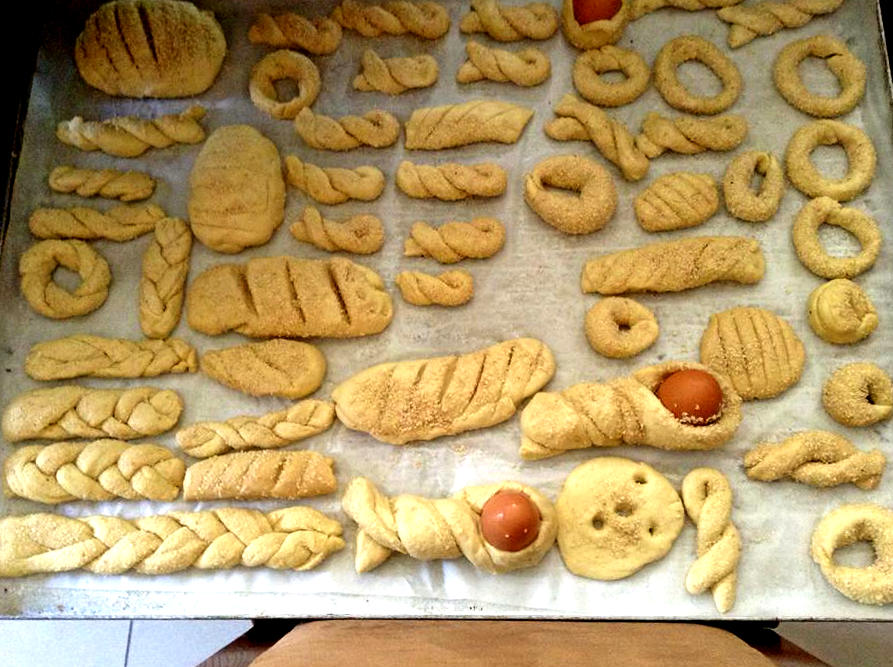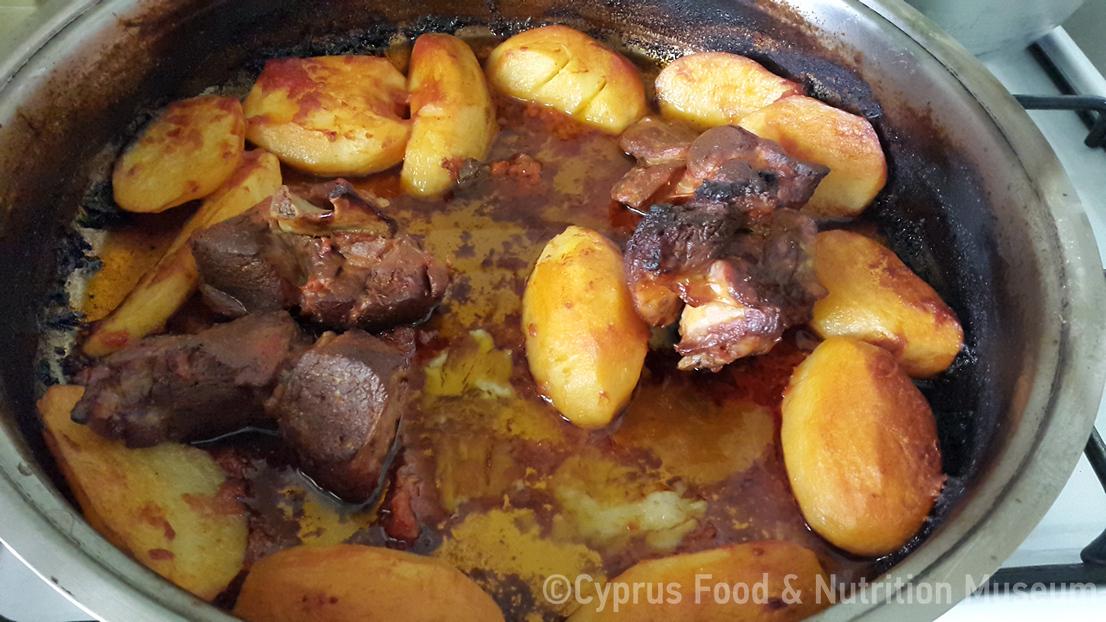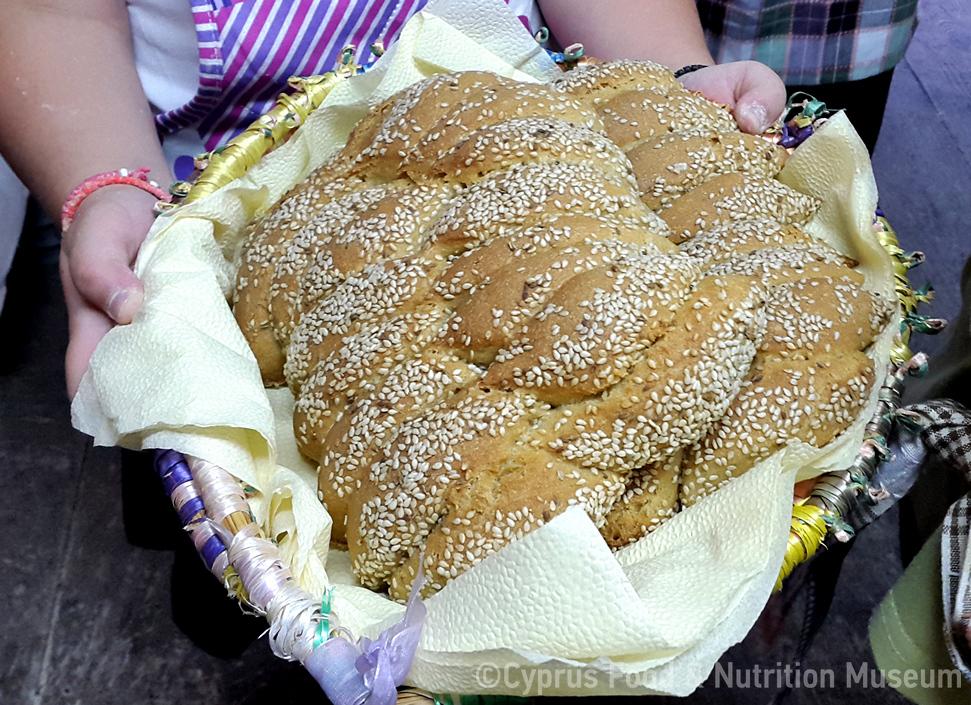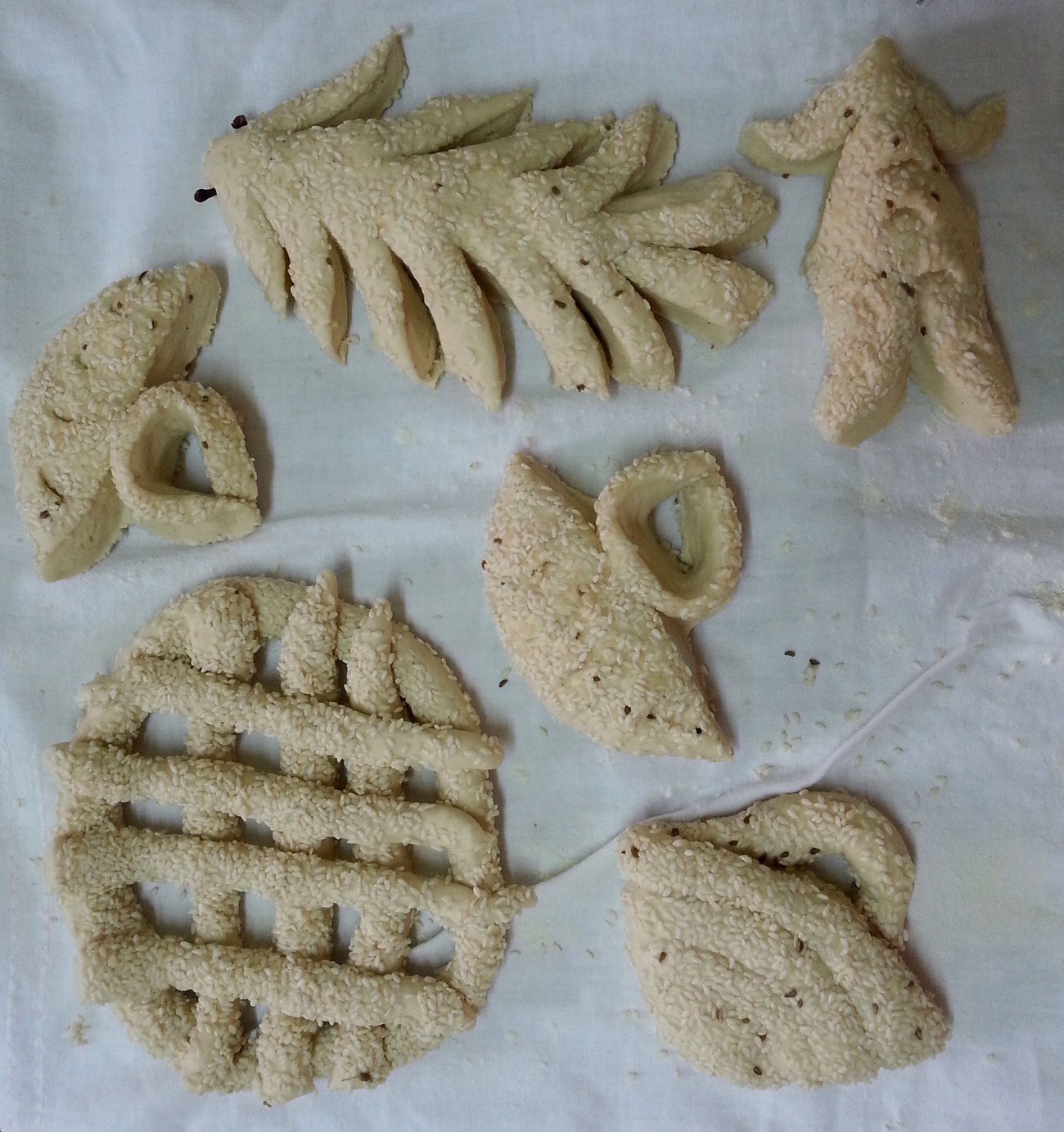An Easter bread. After kneading kouloures (bread) and flaoúnes, women would use a piece of the same dough to form small cases in the shape of a salt cellar, in which they would place one or two eggs (boiled and dyed red) standing upright.
Name - Origin
Koullouri bread in the shape of an egg case, with a red egg in the centre / Easter brioche with a red egg in the middle, koullouri bread with a baked egg in the middle to commemorate the dead (Yiangoullis 2009, entry αβκωτή,η, 32)
Xenophon P. Pharmakidis notes that this is an Easter treat for children (Kypri 1983 [2003²], entry αυκωτή,η, 295-6).
Kypri - Protopapa report that women would give the dough the shape of a case and place red eggs in it (Kypri - Protopapa 2003, 129-130).
In some villages, they were called afkotíres.
After kneading kouloures (bread) and flaounes, women would use a piece of the same dough to make small cases in the shape of a salt cellar, in which they would place one or two eggs (boiled and dyed red) standing upright. Avkotí would be baked in a wood-fired oven, but placed close to the opening, so that it could easily be taken out as it would bake very quickly (Kypri 1983 [2003²], entry αυκωτή,η, 295-6). Avkoti dough consisted of flour, semolina, salt, oil or butter and sometimes anarí cheese, milk and spices. This dough was called 'millomeni' (Kypri - Protopapa 2003, 129-130). In the village of Agridaki they would make single, double or triple avkotí. In the village of Sikhari they would make avkotí in the shape of a girl and place an egg on it. In Akanthoú, they would make stavrokoúlloura (bread with a cross) on which they would place four or five eggs (Kypri - Protopapa 2003, 129-130).
Functional and symbolic role
Harvesters used to eat stavrokoúlloura with eggs (bread with a cross and eggs on top) in the fields, since the harvest period (usually in May) coincided with Easter time, especially with the week after Easter. A bread with a cross and five eggs on top was called ‘o Mas o pentofás' as the days were long and the workers needed to eat five times a day (Kypri - Protopapa 2003, 129-130).
Avkotí used to be prepared on Maundy Thursday or Maundy Saturday along with other Easter bread (Kypri - Protopapa 2003, 129-130).
Since ancient times, eggs would symbolise new life, since they enclose within them a seed of life, a new power that can be transmitted to humans. At the same time, the colour red is associated with life, since it is the colour of blood (Kypri - Protopapa 2003, 129-130).
Additional information and bibliography
Kypri T. D. (ed.) (1983 [2003²]), Υλικά διά την σύνταξιν ιστορικού λεξικού της κυπριακής διαλέκτου, Μέρος Β΄, Γλωσσάριον Ξενοφώντος Π. Φαρμακίδου, Publications of the Centre for Scientific Research, IX, Nicosia.
Kypri T. - Protopapa K. A. (2003), Παραδοσιακά ζυμώματα της Κύπρου. Η χρήση και η σημασία τους στην εθιμική ζωή, Publications of the Centre for Scientific Research, XVIII, Nicosia.
Stalo Lazarou, Demetra Demetriou / Petroula Hadjittofi, Argyro Xenophontos

